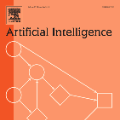Embodied AI is widely recognized as a key element of artificial general intelligence because it involves controlling embodied agents to perform tasks in the physical world. Building on the success of large language models and vision-language models, a new category of multimodal models -- referred to as vision-language-action models (VLAs) -- has emerged to address language-conditioned robotic tasks in embodied AI by leveraging their distinct ability to generate actions. In recent years, a myriad of VLAs have been developed, making it imperative to capture the rapidly evolving landscape through a comprehensive survey. To this end, we present the first survey on VLAs for embodied AI. This work provides a detailed taxonomy of VLAs, organized into three major lines of research. The first line focuses on individual components of VLAs. The second line is dedicated to developing control policies adept at predicting low-level actions. The third line comprises high-level task planners capable of decomposing long-horizon tasks into a sequence of subtasks, thereby guiding VLAs to follow more general user instructions. Furthermore, we provide an extensive summary of relevant resources, including datasets, simulators, and benchmarks. Finally, we discuss the challenges faced by VLAs and outline promising future directions in embodied AI.
翻译:暂无翻译




